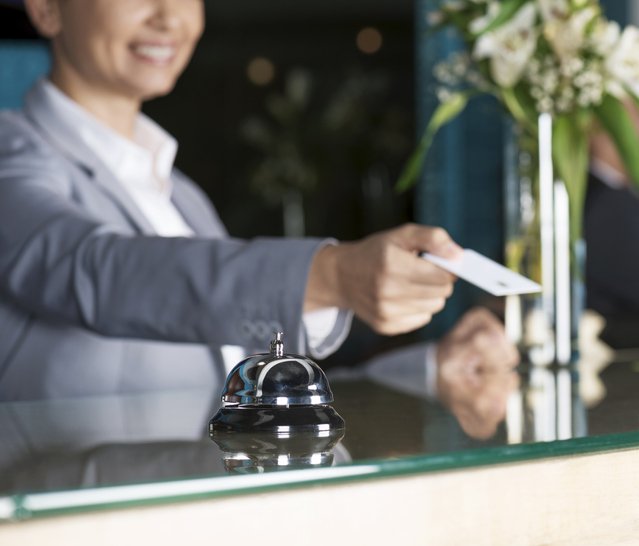Hotel spend represents between 30 and 50 percent of a company’s total travel spend but in contrast to air spend, it is often left unmanaged. Corporate travel buyers need to focus greater attention on this complex, inflationary spend category to optimize their overall travel program. Unlike the approximately 250 IATA (International Air Transport Association) companies that constitute the global airline industry, the corporate hotel market is fragmented with more than 250,000 suppliers, creating an elaborate sourcing environment for travel buyers. Establishing and closely monitoring a hotel program that travelers adhere to provides greater leverage for negotiations and drives savings. Discouraging the use of distribution channels outside of the travel management company (i.e., hotels’ proprietary reservation systems and Websites, Web booking sites) is an important step to enhancing compliance, capturing hotel spend, obtaining better rates and improving traveler tracking in the event of an emergency.
Occupancy rates and prices should maintain ationary spiral across all segments, as demand is expected to exceed supply until 2010. At that time, additional hotel rooms will be available, particularly in emerging markets. ” markets such as New York; Washington, D.C.; and London, as well as Moscow, India, China and several cities in Asia that are experiencing double-digit price increases. Those corporations that have a hotel policy in place stand the greatest chance of minimizing the impact of rising hotel costs.
The hotel industry has introduced various rate structures, often favoring a dynamic pricing model(i.e., the best available rate as determined by supply and demand) over the traditional rates negotiated by travel management companies and/or their clients. Best available rates can sometimes be lower than negotiated rates and should be taken advantage of when appropriate. Nevertheless, it xed rates to set a limit on prices in key locations. This will help maximize control over hotel spend during peak demand periods. When this is not possible cient volume, negotiating a xed discount on the best available rate is recommended.
CWT statistics indicate that on average, only 50 percent of hotel bookings are made through an organization’s online booking tool or travel management company. This means a significant portion of all bookings are not leveraged during supplier negotiations. Furthermore, non-compliance with the hotel program increases by 15 percent when bookings are made through alternative channels. Traveler tracking and security are also compromised when hotel bookings are made outside of prescribed channels.
Companies who are successfully managing their hotel program tend to adhere to the following best practices:
- Consolidate data for optimized hotel sourcing.Consolidating global hotel data from travel management companies, corporate card providers and hotel suppliers is the first step to assessing overall volume and improving negotiating power.
- Carefully orchestrate negotiations with a limited number of suppliers. For best results, companies should coordinate a request for proposal process with hotel chains and independent properties alike. Building strong local relationships with chains and independents is essential for negotiations, as most pricing decisions depend on the number of room nights booked annually at each individual property (including chain hotels). This is in stark contrast to airlines, whose discounts are based on overall volumes. It is also important to remember that working with a limited number of suppliers in each city results in greater volume per property and larger discounts. According to a CWT survey, consolidation of hotel sourcing allows companies to save on average 6.5 percent and up to 12 percent after one year.
- Monitor negotiated fare-loading in GDSs (global distribution systems). There is an increasing incidence of GDS “rate squatting” that compromises compliance and savings. This occurs whenever a hotel uploads rates before it actually signs an agreement with a company or after a contract has expired. There are several ways to address this problem: conductregular hotelrate audits to ensure that preferred properties have correctly loaded their clients’ negotiated rates into a GDS, integrate clear GDS rate-loading instructions in the requests for proposal, reinforce travelers’ awareness of the preferred hotel program, and integrate a filtering capability into the online booking tool.
- Have travelers book hotels through the corporate online booking tool or the travel management company for increased compliance, enhanced security and the best price. According to CWT research, travelers cite practicality (i.e., a hotel’s proximity to their business destination), availability and the ability to obtain better prices elsewhere—a misperception, as indicated in Figure 6—as their main reasons for booking outside of their travel policy. Furthermore, they bypass preferred booking channels and tend to make reservations with the hotel directly. CWT data also indicates that travelers use preferred suppliers more often and are less likely to use deluxe hotels when they book through the travel management company. In addition, they are more effectively tracked in the event of an emergency. There are several ways to address non-compliant behavior: internal communications and training about the travel policy, targeted actions toward non-compliant travelers, non-reimbursement, automatic routing to hotel content when an air booking with an overnight stay is made online, and redirection at the point of sale.
- Adjust the preferred hotel program to increase traveler compliance. Unusually low compliance with preferred hotels may imply that travelers’ needs are not being adequately met and that corrective action is needed. Key factors to consider include the range of cities covered, the convenience of locations, and the scope and quality of traveler services.

